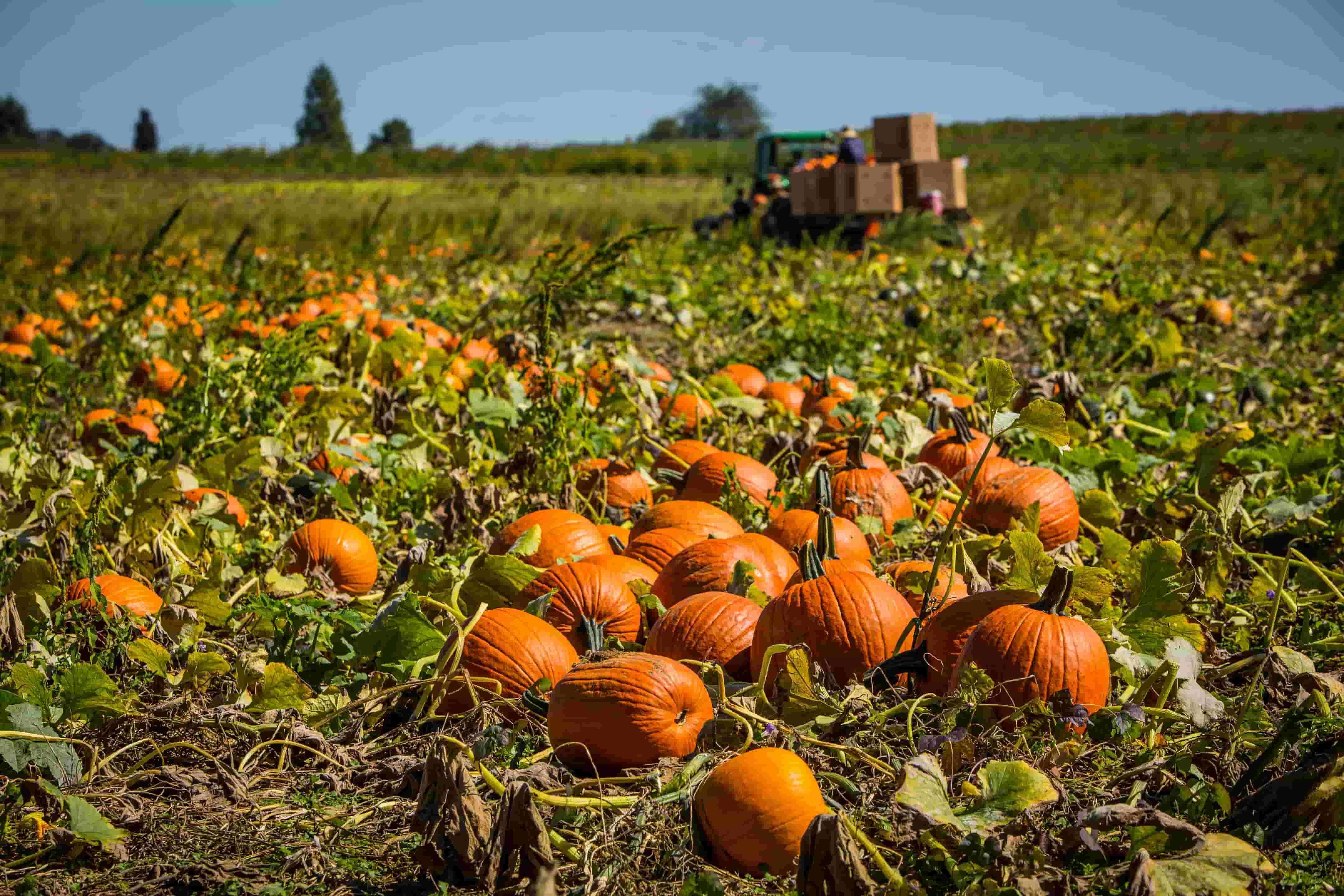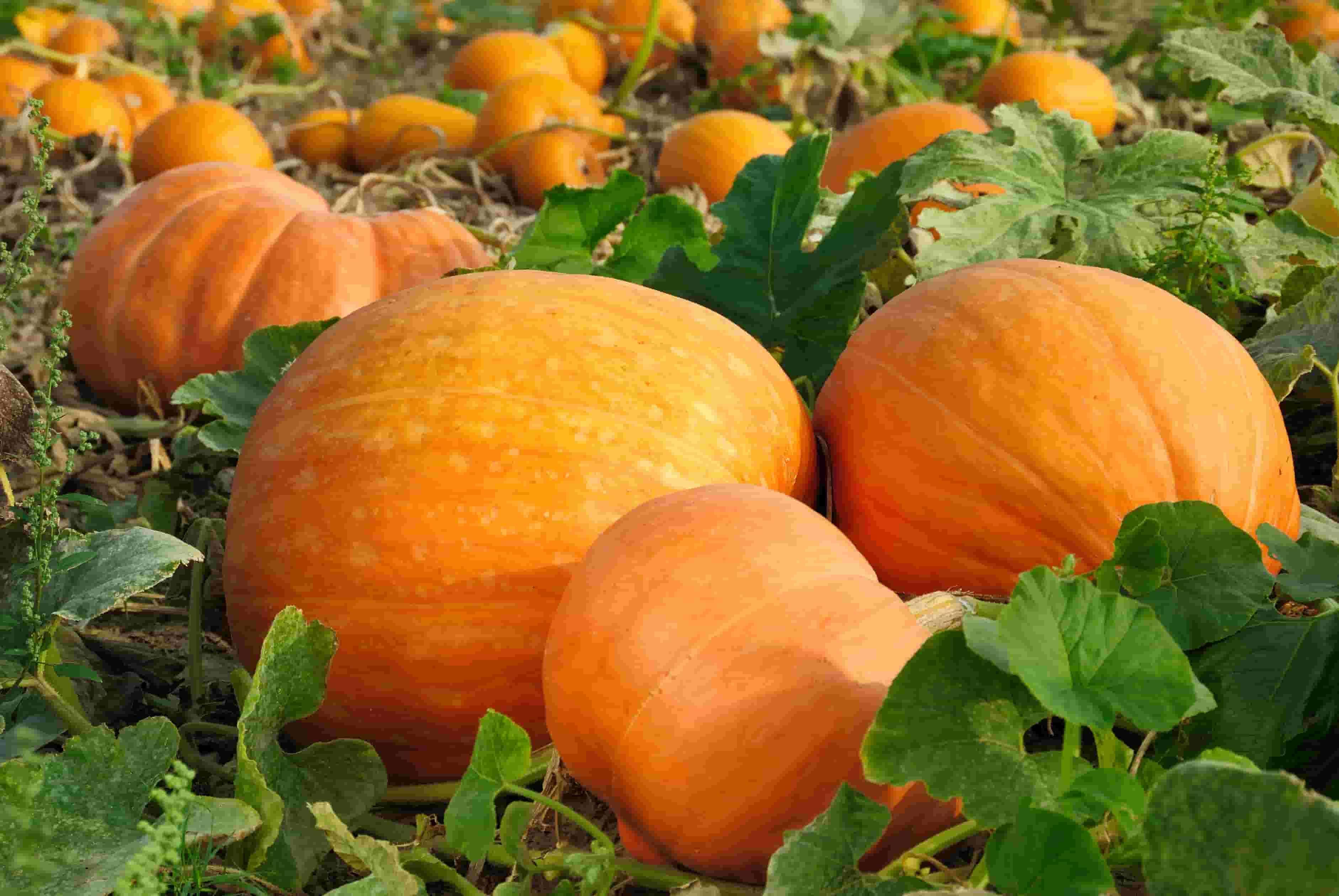Growing Pumpkins
Learn How to Grow and Care for Pumpkin Plants

Whether you use pumpkins for carving or cooking, growing pumpkins in your backyard can be rewarding. In fact, growing pumpkins is easy if you have the space to do it. Let’s look at a few key steps on how to grow the perfect pumpkin patch.
Planting Pumpkin Seeds
Knowing when to plant your pumpkin seeds depends on your growing season. If your growing season is short, you may need to start your seeds indoors, about 2 to 4 weeks ahead of spring frost.
Pumpkin seeds are sensitive to cold, so planting in warm soil is best. When picking out your pumpkin patch area, choosing a site with full sun and some light shade will help optimize your growing conditions.
In terms of soil, pumpkins prefer soil that is well drained. Besides soil, planting seeds in an area that allows vines to sprawl out is important. If you have a smaller garden you can still create a pumpkin patch, but will need to be strategic about location by planting pumpkins at the edge of the garden.
Pumpkin Varieties
There are three main types of pumpkin varieties - vine, bush and miniature varieties. Vine varieties require seeds to be planted about 1 inch deep, or 4 to 5 seeds per soil mound. Bush varieties should be planted one inch deep with one to two seeds per row, with rows being about six feet apart. Miniature variety seeds need to be planted one inch deep with two to three seeds every two feet, per row. There are different types of pumpkins within these varieties, including small to giant varieties.
Pumpkin Patch Care
While pumpkins aren’t high maintenance, they do like lots of water. An average of one inch per week is ideal. If it is a small patch and you are hand watering, be sure to avoid the leaves, otherwise the pumpkin may become more susceptible to rotting. In addition to a good healthy watering, pumpkin plants also thrive with regular treatment of manure or compost which helps encourage growth.
Pumpkin Pests
There are a number of pests that like to target pumpkin plants. The following is a list of the main pests to watch out for:
- • Squash bugs and cucumber beetles;
- • Aphids;
- • Powdery Mildew;
- • Anthracnose
Cucumber beetles and squash bugs typically infest pumpkins in the late summer. Providing good light and not over fertilizing are two ways to reduce the risk of pests and insects infesting pumpkins.
Harvesting Pumpkins

It is best to harvest pumpkins when they are mature – do not pick them off the vine until they have reached your desired size. You will know if a pumpkin is ready if it has ripened, which includes it having turned orange – the most common color for pumpkins.
To harvest a pumpkin, cut the fruit off the vine with either a knife or pruners – it is not recommended to tear them off the vine. It is also important not to cut too close to the pumpkin, as it will reduce the pumpkin’s keeping time. Just like apples, pumpkins may bruise if not handled with care.